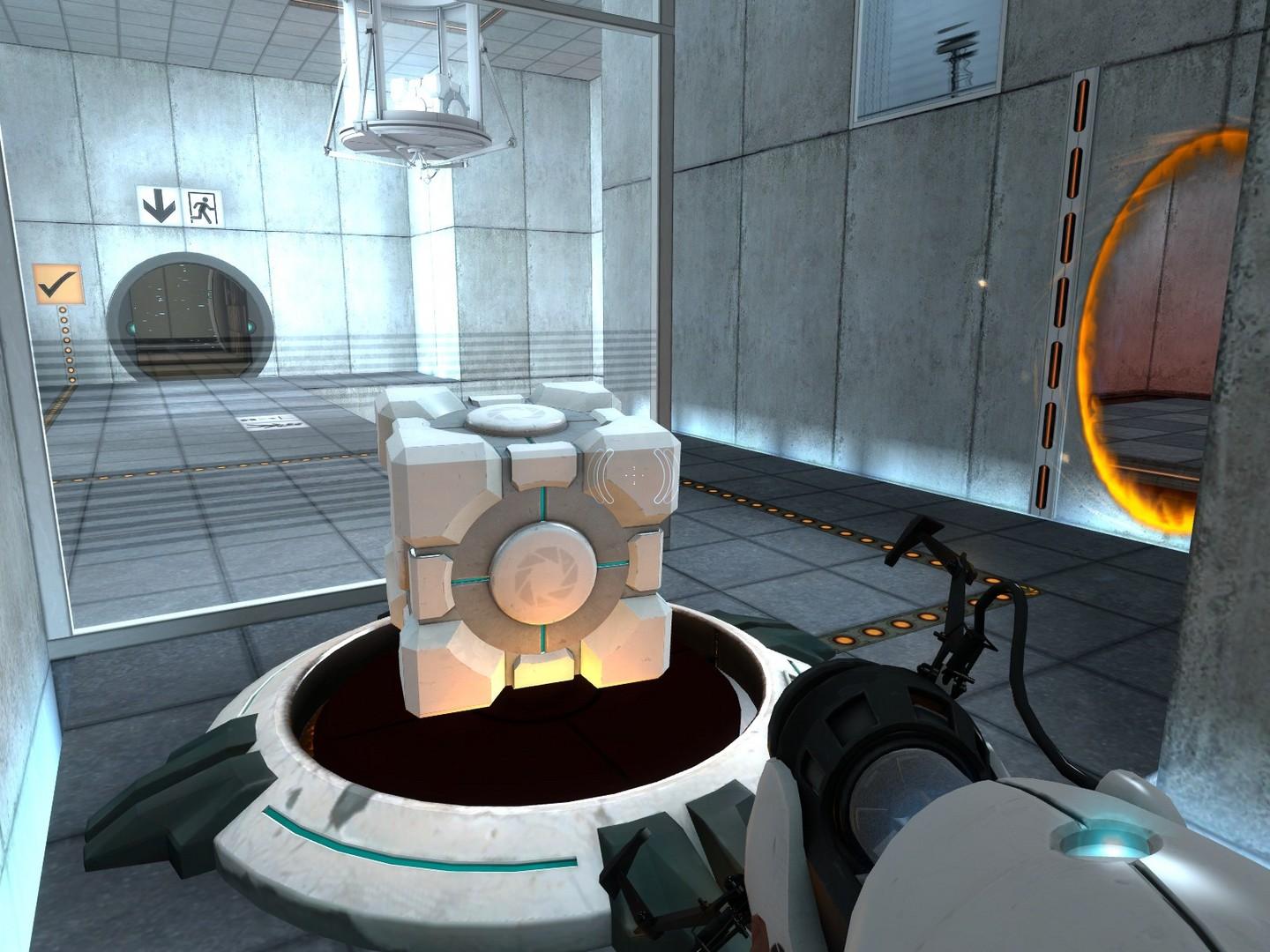This week, I played “Portal” as developed by Valve and played via Steam. The game’s primary audience seems to be players age 13+ — the gameplay involves some elements of violence, death, and destruction. Additionally, the underlying narrative (and the narrator’s witty banter) would best be understood by a mature audience. Portal, as a game, exemplifies the kinds of fun given by challenge and possibly narrative as the player completes successive platform puzzles under the guide of GLaDOS — the player’s AI docent — in order to complete some ill-described “experiment”. Portal is the quintessential first-person puzzle/platformer of the 21st Century and is one of the best games to have ever existed.
Mechanically, Portal is one of the most creative puzzle platformers to have been created. The premise of Portal is that the player is equipped with a portal gun — this gun can shoot two instances of portals on certain surfaces, an orange and a blue portal. The use of portal here is very literal; once the two portals exist in the gameworld, the player may walk through either portal to be teleported to the either. Similarly, the player may place objects or shoot projectiles through the portals in order to bypass the physical constraints of the gameworld. All physics transfer through the portals as one would expect — a player with momentum going into a portal exits the other with that same momentum.
In terms of level design, Portal leverages its unique portal gun mechanic fantastically. The puzzles are entirely based on the physical layout of each experiment room. Often, the player must place some object (or themselves) on a pressure pad in order to open a door and progress to the next level. However, the levels are designed to look nearly impossible without the use of the portal gun — there might be an impassable chasm of water between the player’s starting position and the finishing position, or a wall of lasers preventing an object from crossing some barrier, or even a mob of well-programmed killer robot AIs. However, the clever player will recognize that the portal gun makes the difference. They’ll find that there is a way to position their portals in such a way that they and any object they require can bypass the physical constraints of the level — either through walking, jumping, being launched into, being launched out of, and falling through the portals.
Portal, from a mechanical standpoint, is an amazing game. And all of this praise is said without beginning to mention the narrative of the game itself, which is similarly clever, brilliant, and satisfying to see to completion. My only complaint is that there isn’t a Portal 3 (yet).



